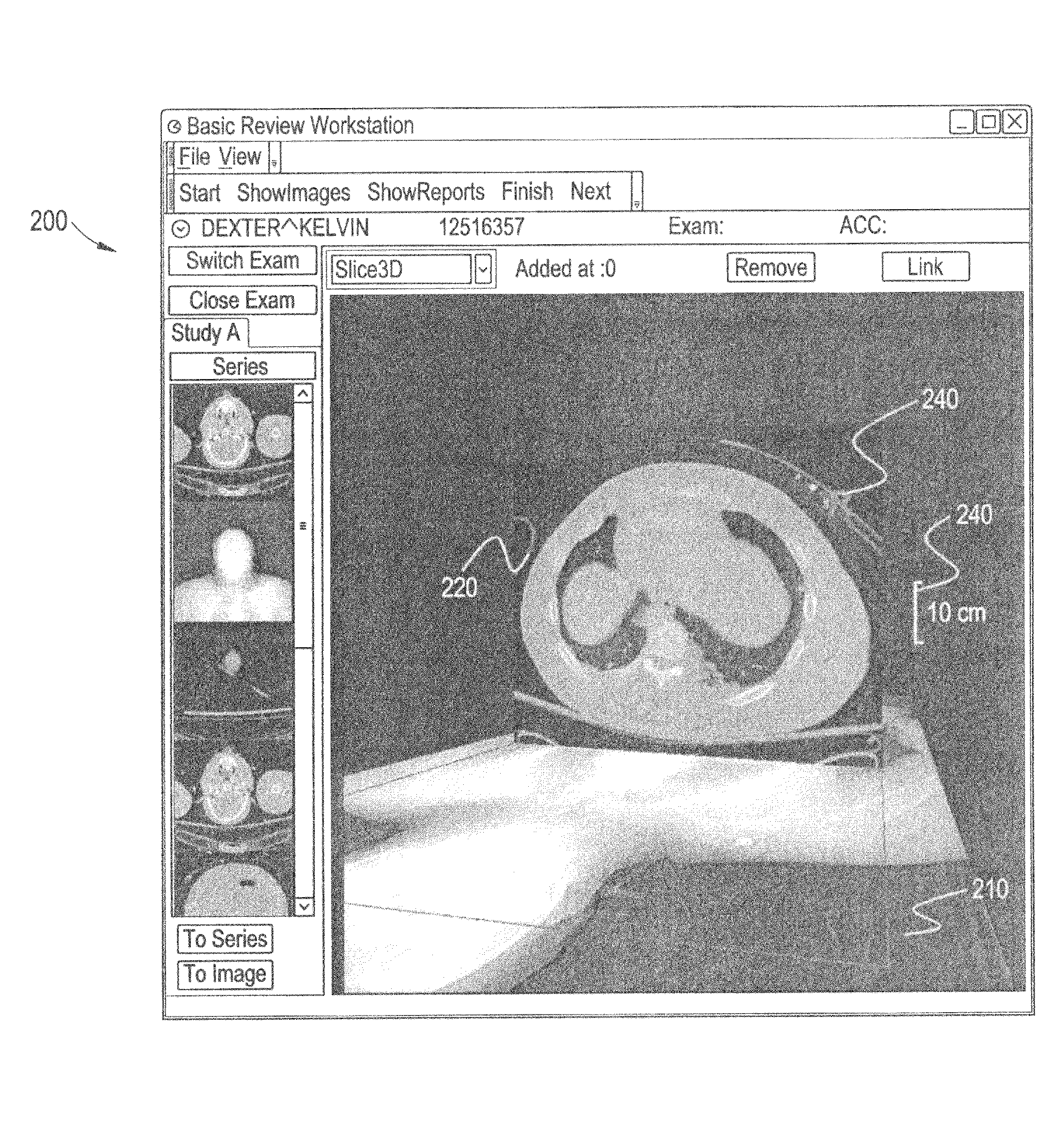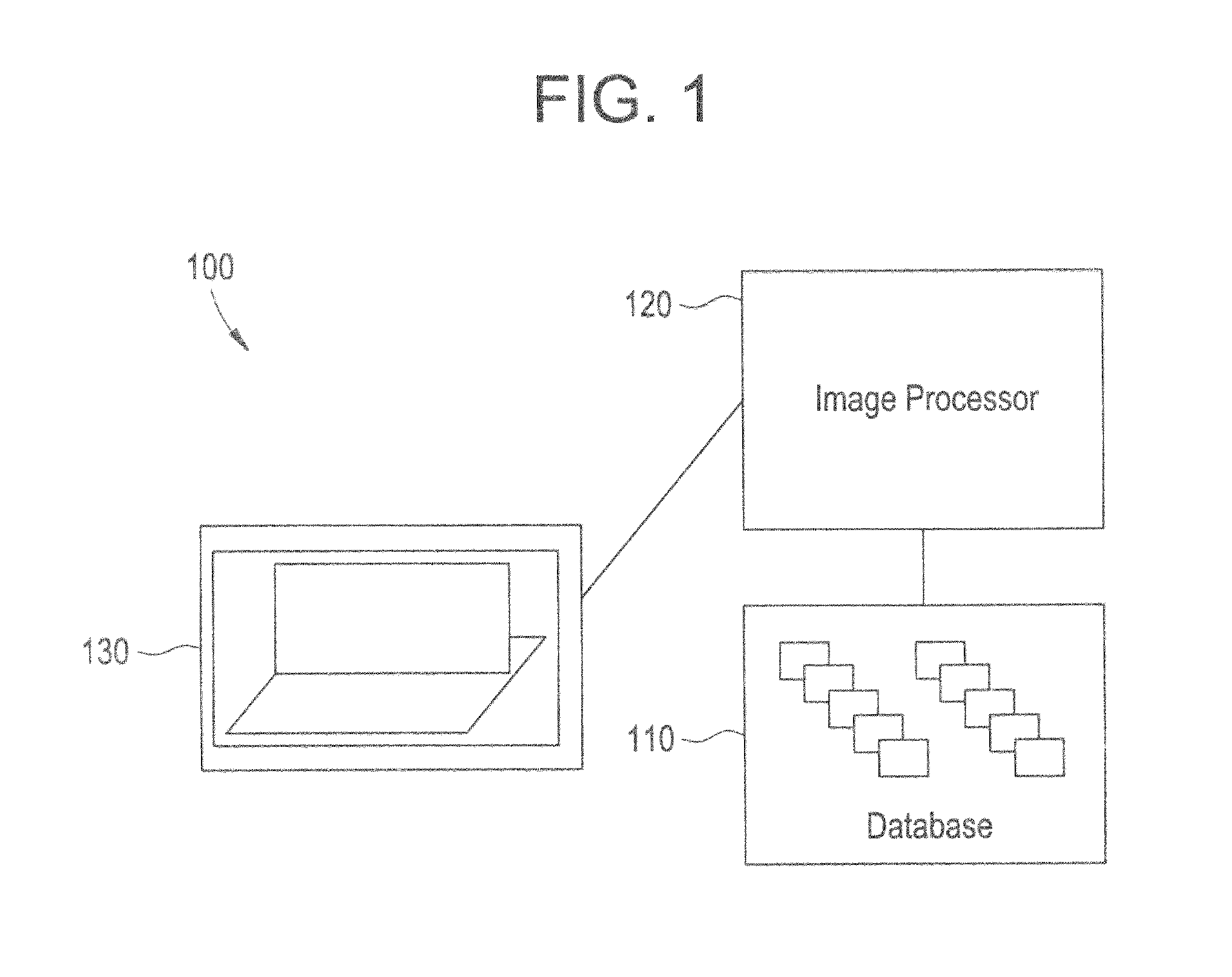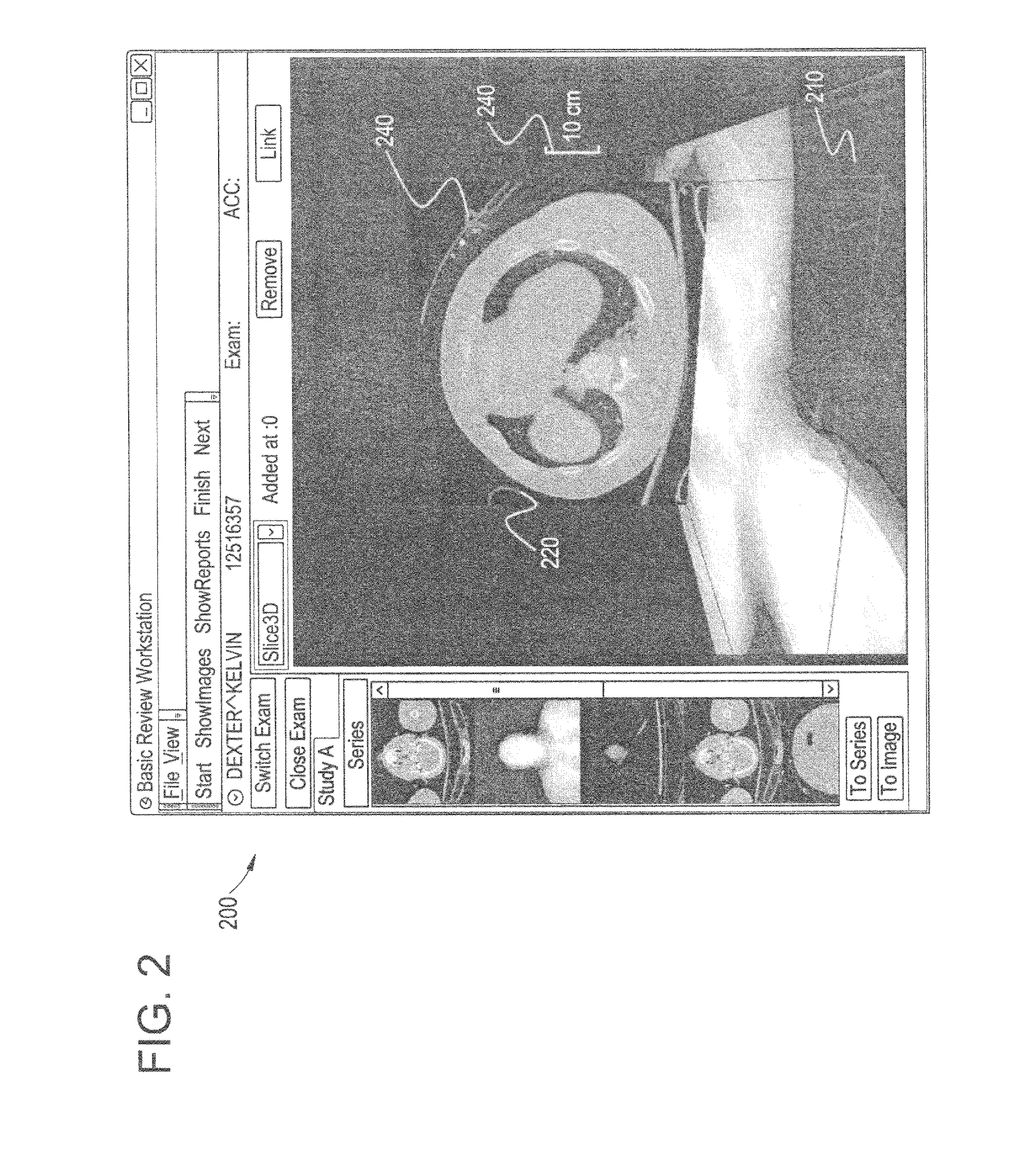Systems and methods for image processing of 2D medical images
a technology of image processing and medical images, applied in the field of image processing, can solve the problems of user division of attention, difficult to see where the image is located in the object, and difficult to interpret image slices
- Summary
- Abstract
- Description
- Claims
- Application Information
AI Technical Summary
Benefits of technology
Problems solved by technology
Method used
Image
Examples
Embodiment Construction
[0016]FIG. 1 illustrates a system 100 for image processing according to an embodiment of the present invention. The system 100 includes a database 110, an image processor 120, and a display 130.
[0017]The image processor 120 is in communication with the database 110 and the display 130.
[0018]In operation, the image processor 120 selects a selected image slice from the database 110. The image processor 120 generates a display image including a localizer image and the selected image slice. The display 130 displays the display image generated by the image processor 120.
[0019]The database 110 includes one or more image slices. These image slices may be taken using a scan of an object such as a patient, for example. For example, images slices may be acquired from an imaging system such as a magnetic resonance imaging (MRI), computed tomography (CT), or a Positron Emission Tomography (PET) modality.
[0020]The image processor 120 is adapted to select an image slice. The image slice may be se...
PUM
 Login to View More
Login to View More Abstract
Description
Claims
Application Information
 Login to View More
Login to View More - R&D
- Intellectual Property
- Life Sciences
- Materials
- Tech Scout
- Unparalleled Data Quality
- Higher Quality Content
- 60% Fewer Hallucinations
Browse by: Latest US Patents, China's latest patents, Technical Efficacy Thesaurus, Application Domain, Technology Topic, Popular Technical Reports.
© 2025 PatSnap. All rights reserved.Legal|Privacy policy|Modern Slavery Act Transparency Statement|Sitemap|About US| Contact US: help@patsnap.com



